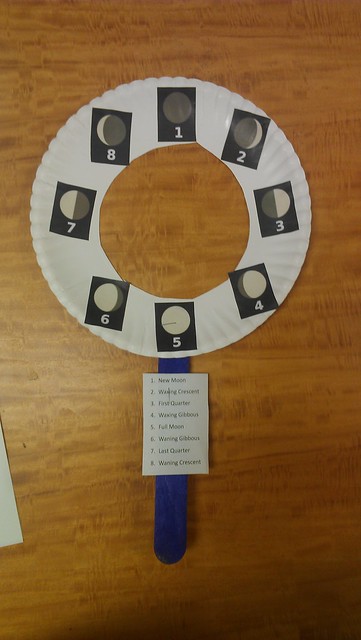The moon’s appearance in the sky follows a 29.5-day cycle. During the cycle, it first appears as a crescent. The lighted portion that you can in the night sky see becomes larger as days pass, growing until you see a full moon. As more days pass, the lighted portion gets smaller again, until no moon is seen. The cycle then repeats. This 29.5-day cycle corresponds to the time during which the moon makes one complete orbit around Earth.
When you see a full moon, Earth is between the moon and the sun, and all of the lighted half of the moon faces Earth. When there is a “New Moon.” the moon is between Earth and the sun, and all of the lighted half of the moon faces away from Earth. When there is a New Moon, you can’t see any of the moon at all.
Materials:
Paper plates
Copies of moon phases  Scissors
Scissors
Glue
Stapler
Jumbo craft sticks
Procedure:
Fold a paper plate in half and carefully cut out the middle of the plate with scissors.
Neatly cut out the moon phases and glue them to the rim of the plate starting with #1 in the 12 o’clock spot and working clockwise.
Staple a jumbo craft stick to the bottom of the plate.
Staple or glue the moon phase key to the handle of the plate.
At night, locate the moon. Holding the moon viewer with the stick pointing toward the ground, frame the moon within the center of the plate. Observe. Which picture does the moon most closely resemble? Find that number on the moon phase key and you will know the name for the phase of the Moon you are viewing!








